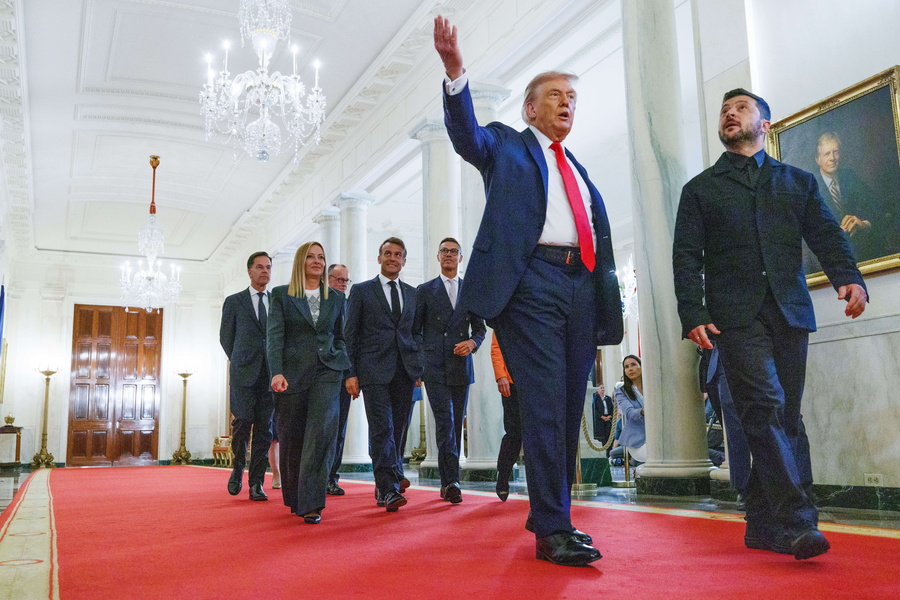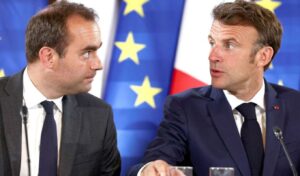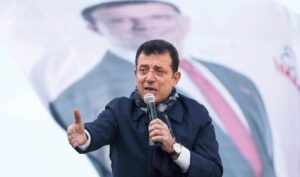The clouds have cleared and after a long time, a clearer picture emerged, a warmer climate for the Ukrainian issue in the Oval Office. With memories still fresh from the turbulent meeting at the White House six months ago between Donald Trump and Volodymyr Zelensky that shook the diplomatic scene, the global community was cautious about the new round of negotiations. The successive back-and-forth, the foggy landscape that seemed to sink every attempt to draft a ceasefire plan, the months-long prevalence of uncertainty – all of this seemed to recede in the face of constructive talks in Washington with the US-Europe-Ukraine format achieving a satisfactory result. International analysts watching the conversations between the American president and his Ukrainian counterpart, as well as with seven top European officials, wrote about apparent steps forward after a marathon of negotiations. Those involved in the process managed for hours to avoid tensions and focus on future solutions that would prove beneficial to opening the path to ceasefire.
After the Washington marathon talks, individual statements began that reflected the image of progress. Indeed, British network Sky News was quick to write about a clear success for Volodymyr Zelensky after the work concluded, especially considering the February fiasco when the Ukrainian president was expelled from the Oval Office after tensions rose sharply with his American counterpart and JD Vance, who accused him of ingratitude. Half a year later, the Ukrainian president – with a different dress code, specifically wearing a suit – said “thank you” many times to the American side and emerged satisfied after the contacts concluded, speaking of security guarantees and an upcoming trilateral meeting with Americans and Putin.
Trump-Zelensky White House meeting: Why it wasn’t considered a fiasco
At this point, the question reasonably arises why this multilateral meeting was not considered a fiasco. With Europeans approaching the negotiating table cautiously, having informally vetoed any violation of Ukraine’s territorial sovereignty, they ultimately managed to conduct constructive talks with Trump. The Europeans focused on a ceasefire plan with security guarantees, with French President Emmanuel Macron insisting on increasing pressure on Russia with additional sanctions in case of non-compliance, German Chancellor Friedrich Merz focusing on territorial integrity by emphasizing that a possible concession of the Donbas region to Russia would be equivalent to Trump giving up Florida, British Prime Minister Keir Starmer emerging satisfied, and the Finnish president – anxious about the next day due to proximity to Russia – focusing on NATO’s role and security guarantees.
NATO Secretary General Mark Rutte, for his part, called the US effort to end the war significant, but clarified that the issue of European troops on Ukrainian territory was not discussed at all. After completing the White House meeting, Commission President Ursula von der Leyen wrote in a post: “The human cost of this war must stop. And that means every child from Ukraine who has been abducted by Russia must be returned to their families. I thank the US President for his clear commitment today to ensure these children will be reunited with their loved ones.”
The territorial issue and statements by Trump and Zelensky
But what happened with the territorial issue? After the talks, there were reports that the American president showed his Ukrainian counterpart a new map that would apply after the war, with the latter disagreeing. However, Zelensky denied that any solution emerged regarding territories. It should be noted that before the Trump-Zelensky meeting, the US president stated that Ukraine’s territories concern exclusively that country. The issue of Donbas and whether to concede the region to Russia, which claims the mineral-rich area, had sounded alarms in the Old Continent.
It’s worth noting that US Secretary of State Marco Rubio emphasized that concessions must be made by both Russia and Ukraine, something that may not always be fair to one of the two sides, and added that it was agreed to build a plan for security guarantees.
What was vigorously commented on by international media was Trump’s 40-minute phone conversation with Vladimir Putin, who – after they had met in Alaska – discussed the possibility of a trilateral meeting with Zelensky, something the Russian president did not deny.
Trump, for his part, announced the start of procedures for a direct meeting between Putin and Zelensky, with his own participation, after a series of contacts with European leaders in Washington. According to the US president, all participants in the talks expressed optimism about the possibility of achieving peace between Russia and Ukraine after nearly four years of war.
Volodymyr Zelensky, in turn, said he hopes for an immediate trilateral meeting with Trump and Putin. He confirmed Trump’s phone conversation with Putin and maintained that Russia proposed a bilateral meeting and then a trilateral one. He added that the result was good. Regarding the $100 billion agreement for purchasing weapons from the US, he emphasized that everything will be formalized “on paper” as part of security guarantees.
“The essence is that we don’t have this money and need additional funding, and this is what our European partners must understand – that the money must be found,” Zelensky emphasized, noting that the agreement is for $90 billion.




